- adaptogenic;
- toning;
- restorative;
- antioxidant;
- regenerating;
- immunomodulatory;
- is a sedative;
- hemostatic;
- is an anti-inflammatory;
- cardiotonic.
- pregnancy and lactation;
- severe liver disease;
- edema;
- children under 12 years.
Means from a root of a plant suspend aging processes, raise immunity, improve memory and mental abilities, have a beneficial effect on the nervous and reproductive system. They are used for problems with conception, impotence, menstrual irregularities, menopause, neurasthenia, anemia, insomnia, cerebral circulation disorders, accompanied by dizziness and tinnitus, to prevent age-related changes in the brain.
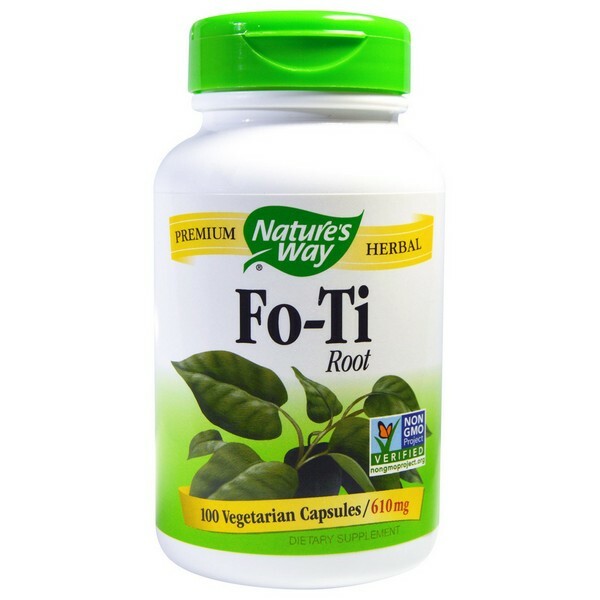
Fallopia helps with violations of the motor function of the digestive tract and metabolism. It stimulates the work of the hematopoietic system, has a purifying effect on the liver and kidneys, strengthens the peristalsis of the intestine, prevents re-absorption of cholesterol, accumulation in the liver and penetration into the walls of the arteries. The plant is useful for the prevention and treatment of senile atherosclerosis and other cardiovascular diseases, as it normalizes blood pressure, improves blood vessel tone, prevents blood clots, reduces heart rate, lipids, sugar and cholesterol in the blood, and reduces its viscosity and improves composition. Highlander multiflorous reduces the burden on the heart and is an effective tool for preventing myocardial ischemia
Interestingly: In China, there is a belief that the root of a 100-year-old multicolor mountaineer contributes to the preservation of youth, with the age of 200 years, gives vitality and makes the body slender, and the age of 300years gives immortality.
As an anti-inflammatory agent, the multi-flower mountaineer's root was used externally for the treatment of acne, eczema, furunculosis, stomatitis and other inflammatory processes in the oral cavity. The plant is also used for diseases of the musculoskeletal system. It helps to strengthen bone tissue, ligaments and tendons.
Medicinal properties of the root of the highlander multiflorous can be successfully used for cosmetic purposes. They help to significantly improve the condition of the hair, prevent their fragility and the earlier appearance of gray hair, make the color more saturated. They also help to rejuvenate the body and normalize weight, accelerate the regeneration of skin cells, eliminate pigmentation spots, increase skin elasticity and smooth fine wrinkles.
Powder or extract of the root of the highlander multicolor is produced by many manufacturers in the form of capsules or tablets like dietary supplements. To accept it in this case it is necessary in accordance with the attached instruction.
Procurement of raw materials
The preparation of the roots of the highlander multicolor is produced in autumn. To do this, they are carefully excavated from the ground, cleaned of debris and impurities, washed under running water, cut into small pieces and dried.
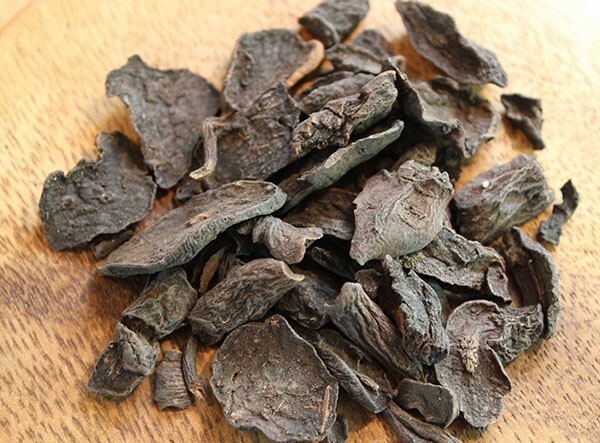
Store the raw material prepared in this way in a dry, cool and dark place for 2 years.
Ways of using
From the root of a multicolor mountaineer for medicinal purposes, alcoholic tinctures, decoctions and infusions are prepared. It is also possible to apply the powdered root of the plant, adding it in small amounts to food.
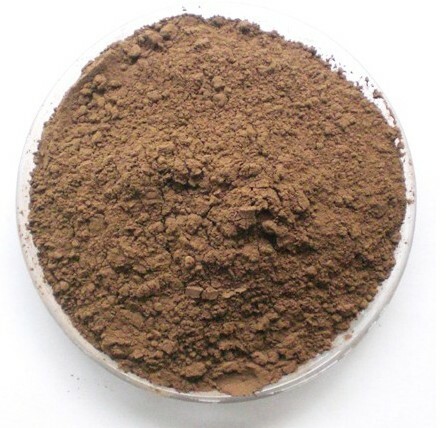
Decoction of the roots
To obtain decoction of the roots of fallopia, 15 g of dry plant raw materials are placed in a pan, poured into 500 ml of water and boiled over low heat for half an hour. Then allow to cool, filter and take to the destination.Vodka tincture of the roots
The crushed dry roots of the multi-flowered mountaineer( 25 g) are poured into a bottle and poured into vodka( 500 ml).Insist the mixture in a dark place for two weeks. After the expiration of the infusion, the tincture is filtered and consumed 30 drops 2 to 3 times daily for a minimum of one month.
Precautions for
Before starting treatment with a multiflorous hieraster, consult a physician to prevent various complications. Contraindications for its use include:
With caution, it should be taken to people suffering from joint pathologies( gout, rheumatism, arthritis), hepatitis, urolithiasis and skin irritations. Against the background of taking the root extract of the highlander, a short-term feeling of numbness in the extremities is possible. Of the side effects may occur allergic reactions, diarrhea.
Different kinds of plants of the Highlander type:
Are you one of those millions of women who struggle with excess weight?
And all your attempts to lose weight have not been successful?
And you have already thought about radical measures? It is understandable, because a slim figure is an indicator of health and an occasion for pride. In addition, it is at least the longevity of a person. And the fact that a person who loses "extra pounds" looks younger - an axiom that does not require proof.
Therefore, we recommend reading the story of a woman who managed to lose weight quickly, efficiently and without costly procedures. .. Read the article & gt; & gt;
- Botanical Description
- Chemical Composition
- Therapeutic Properties
- Procurement
- Methods of Application
- Precautions
Highlander multiflorous or phallopia multiflorous is a perennial herb that belongs to the Buckwheat family. In natural conditions, the multicolor mountaineer grows on the territory of the East Asian countries( Japan, China and Korea) in the highlands in the cool climate zones. In traditional oriental medicine, preparations based on it for centuries are widely used for the treatment of tuberculosis, liver, heart, kidney, and blood vessels. It is believed that the plant has a positive effect on all organs and systems of the body, has a pronounced anti-aging and antioxidant effect, allows delaying the aging process and strengthening health. A lot of legends have been written about the healing properties of this unusual plant by the Eastern peoples. For medicinal purposes, the roots and rhizomes of the highlander are used. Among the other plant names, the following are known: Chinese mountaineer, flower mountaineer, Foti, Hochu vu, Russian grapes, grass of longevity.
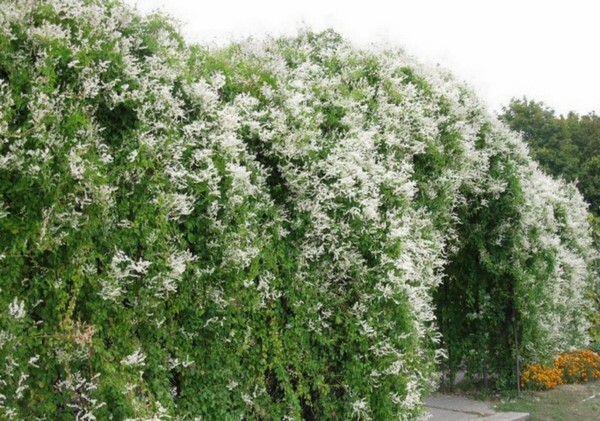
Botanical description
Highlander multiflorous is a winding, leafy deciduous liana, which can be found mainly in high-altitude areas, in foothills and crevices. The plant prefers moist soils. It is suitable for sunny areas or partial shade. Reproduction is carried out by seeds and vegetative method( shoots of rhizomes and division of a bush).
The length of the plant can reach 4 m or more. Active growth begins only after reaching the age of two. The period of life of the mountaineer of the multicolor is estimated in hundreds of years. The root system is powerful, pivotal. Stem is woody with branches. Layout the next. Leaves petiolate, dark green in color. The shape of the leaf blade is cordate or ovoid with a pointed top slightly bent down, the size is from 2 to 8 cm in length. The edges of the leaves are one-piece. The lower leaves are collected in bundles.
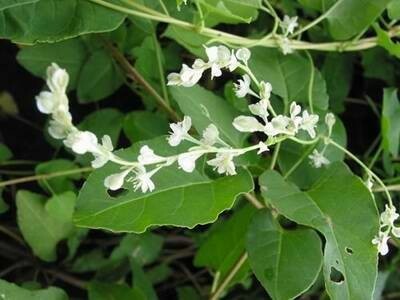
The plant blooms from late August to October, starting from the second year of life. Flowers are bisexual, white or pale-green in color, located in the axils of the leaves, collected in a branchy paniculate inflorescence. Pollination of flowers is carried out by insects. Fruits ripen in October - November. They are trihedral or obovate, dark brown with a glossy shiny surface.
Interesting: Highlander multiflorous can be grown for decorative purposes, for decorating fences, rock gardens, flower beds, unsightly buildings and facades of houses.
Chemical composition
As a medicinal raw material, the roots and rhizomes of the highlander are used. The following useful compounds were found in their composition:
- glycosides( stilbene, emodin, rhein, fision, chrysofanol, etc.);
- tanning agents;
- phytosterols;
- alkaloids( fox, pergolide, lizard, bromocriptine);
- organic acids;
- flavonoids( kaempferol,);
- lecithin;
- lectins;
- proteins;
- capillin;
- starch, etc.
Interesting: For therapeutic purposes, only the roots of fallopia, whose age is 50 years or more, are suitable. In general, it is believed that the older the root, the more a wide range of biological activity it possesses.
Useful properties
The root of the multi-flower mountaineer has the following types of pharmacological action:
